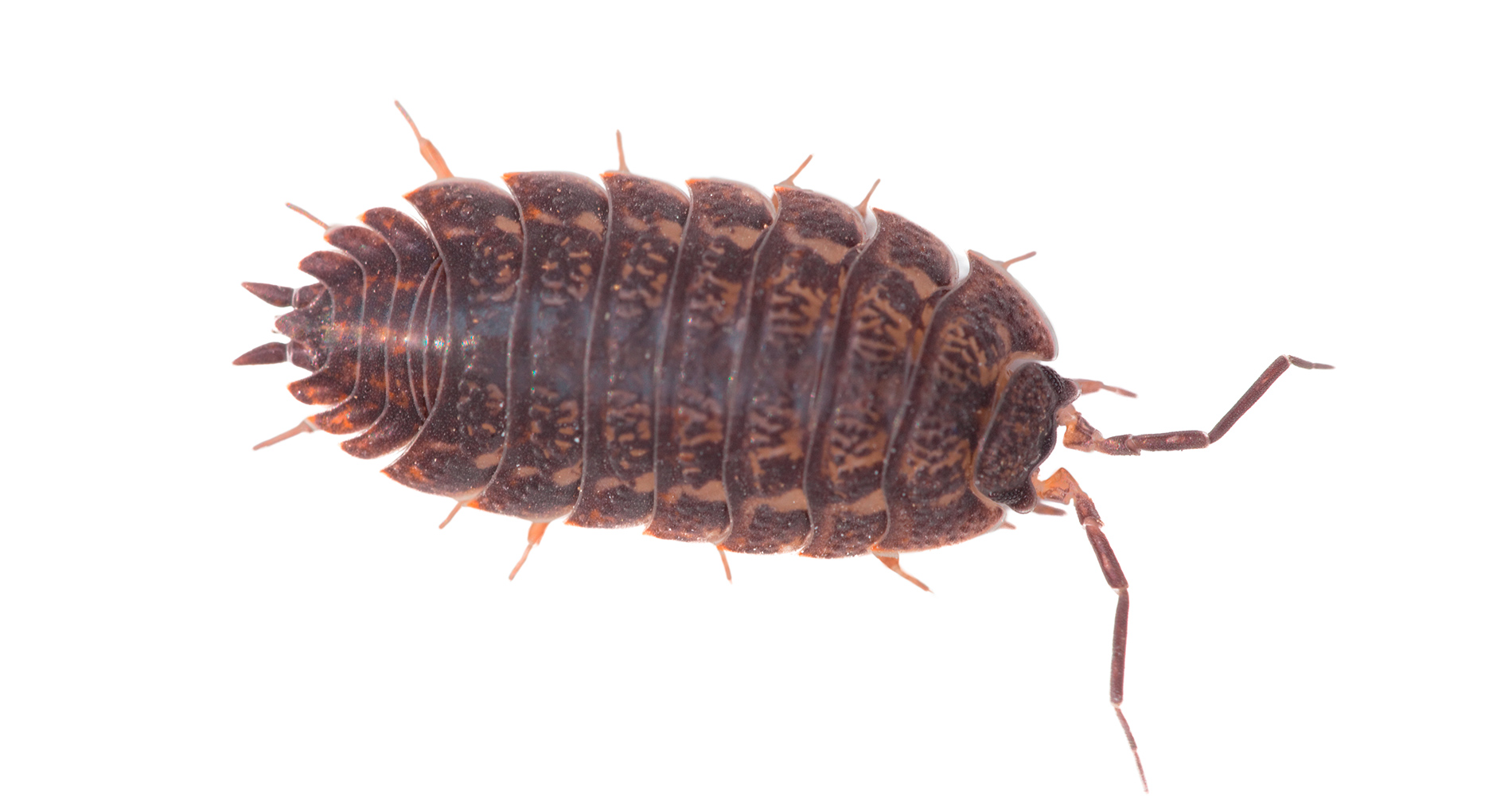Common rough woodlouse
(Porcellio scaber)

Biology:
Common rough woodlice are crustaceans which have adapted to living on land. They have a flattened, segmented body, are up to 16 mm long, slate grey to yellowish-grey in colour and have 7 pairs of legs. They live primarily off a plant-based diet and require a great deal of moisture, meaning that you usually find them in cellars between materials that have been stored damp. Woodlice are characterised by a particular type of brood care, whereby the females carry the fertilised eggs and also the young around with them in a brood pouch on the underside of their body.
Damage:
Woodlice generally do not cause a great deal of damage. In some cases, you might find small bite marks on fruit, vegetables or potatoes which are being stored. Rotting processes are furthered in these areas.
The creatures are generally considered to be annoying and disgusting. In the garden and on compost heaps, woodlice are key when it comes to decomposing organic matter and forming humus. However, they can also cause damage to seedlings and young plants under certain circumstances.
Tip:
As woodlice require a high degree of moisture, you can combat them relatively easily by drying out any affected rooms.
